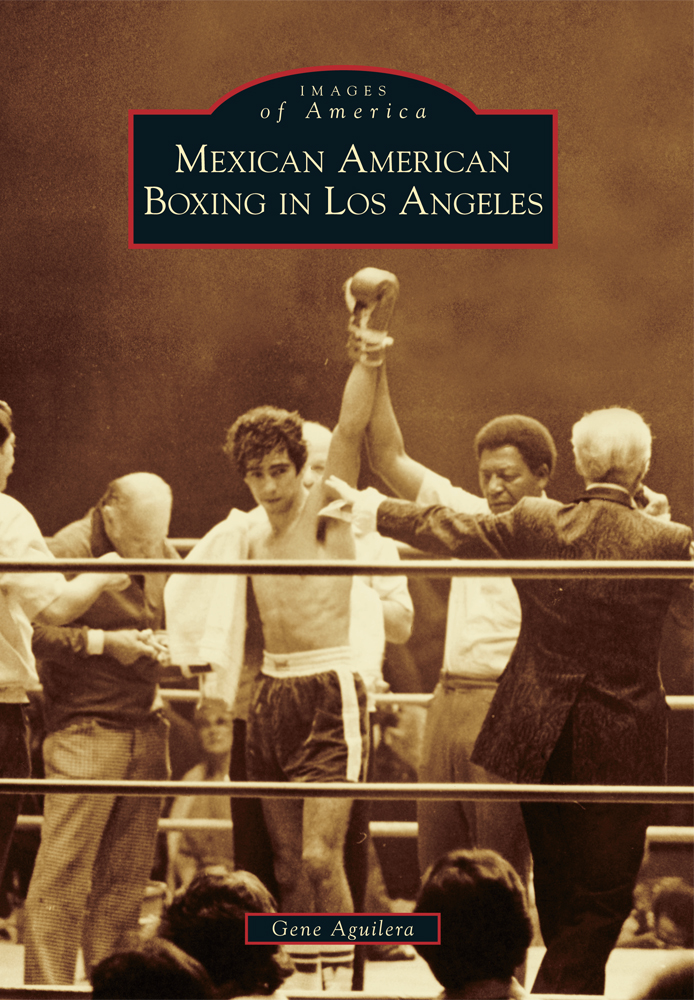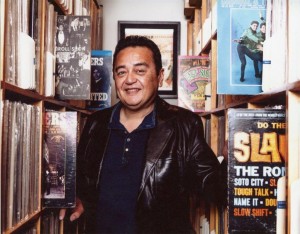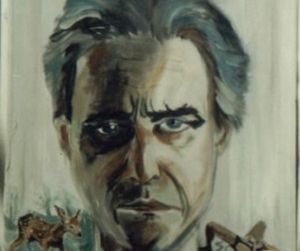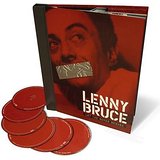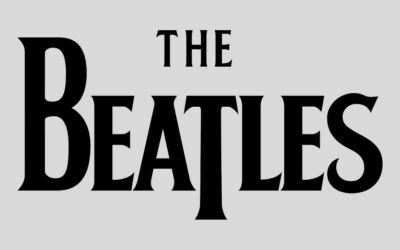by Harvey Kubernik c 2014
Hailing from East Los Angeles, record collector/producer, music historian, songwriter and author Gene Aguilera has loyally triumphed the musical phenomenon known as The East L.A.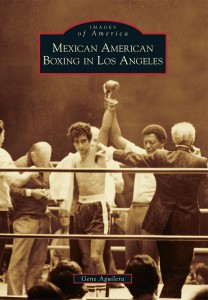 Sound to the world, as well as being simpatico to the native sounds of Southern California.
Sound to the world, as well as being simpatico to the native sounds of Southern California.
Aguilera listened to Thee Midniters on his small transistor radio as a young boy and caught the Stones/Byrds/Beatles live during the mid-sixties. He has guided the careers of Little Willie G., the Blazers, and boxing great Ruben Olivares.
His name can be found on a plethora of credits on albums and CD reissues, including Thee Midniters, the Premiers, Cannibal & the Headhunters, and El Chicano. Gene is also the co-writer of “Poor Man’s Shangri-La” by Ry Cooder on his Chavez Ravine album.
An avid Frank Zappa fan, Gene has also lived and breathed boxing since he was 10 years old. A University of Southern California graduate and bank vice president, in April he published his new book, Mexican American Boxing in Los Angeles (Arcadia Publishing).
Q: Do you have any theories why generally the musical heritage of East L.A. is constantly overlooked or neglected, as perhaps the least documented genre in the musical history of Los Angeles, West L.A. or Hollywood?
A: It’s been a nagging ache in my side, that the East Side Sound during its golden age of the 50’s, 60’s and 70’s is almost never mentioned in the same breath as the Hollywood music scene. It’s like the suits never wanted to cross the bridge to East L.A. during those turbulent times. Thee Midniters, even with a hit single in tow, never got booked at The Whiskey A Go Go probably due to cultural insecurities and insensitivities (combined with naïve management). The East L.A. sound (which combined doo-wop, soul, and The British Invasion) definitely shaped and influenced the musical landscape of the greater Los Angeles area.
“The soulful, horn-drenched influence of Thee Midniters (who preceded brass bands as Chicago Transit Authority and Blood, Sweat & Tears) were one of the first groups to utilize horns as the driving force in a rock ‘n’ roll context. I call East L.A….the forgotten village. That is the perfect name for this colorful barrio that developed its own musical style, burst into the national scene in 1964 with several Billboard Top #100 charting hits, yet reviewers and documentaries of rock ‘n’ roll have traditionally turned a blind eye towards our musical contributions.
Q: As you well know, as a journalist and author I have constantly paraded East L.A. for decades and cite the vision of Eddie Davis and Billy Cardenas and the influential Rampart/ Faro Records label. Why is the legacy of East L.A. and the surrounding area still perceived in some ways as a sleeping giant in terms of reporting and acknowledgment?
A: In the early days, maybe East L.A. was misunderstood. Maybe the exploding Chicano movement, made it difficult for Hollywood to cross racial lines in terms of sending a promo man to scour the barrio for new acts. The East L.A. music scene never seemed to grow past a certain point with the Hollywood shot-callers, maybe from mistrust on both sides. Talented groups and singers failed to receive a long-term recording contract with the major labels. The East L.A. golden age period has usually been stonewalled in the big picture of the pop-culture world, even though we’ve always been in the same city and across the bridge from downtown L.A.
“For my money, vocalist Little Willie G. (of Thee Midniters) can stand toe-to-toe with torch balladeers such as Frank Sinatra and Tony Bennett, and at the same time, tear it up with the best garage ravers as in ‘Jump, Jive & Harmonize.’ Why isn’t he a big star worldwide or nationally? This is a wake up call for the music business. So far, no one yet is breaking down the door to do a documentary on the ground-breaking band Thee Midniters, who released 4 collectable albums in their prime, or sign Willie G. to a major record deal.
“In the 1990’s, I purchased two separate multi-volume documentaries titled The History of Rock ‘N’ Roll (Warner Bros.) and Rock & Roll (WGBN-PBS). After spending hours devouring these documentaries, I was dismayed to find out that not one word or photo was spent on the East L.A. sound. It is encouraging to note, though, producer/director Jon Wilkman released a fine documentary Chicano Rock!”– The Sounds of East Los Angeles–that appeared on PBS in 2008. It is worth checking out.
Q: In the fifties, rock ‘n’ roll in Southern California was partially birthed and nurtured in venues like the El Monte Legion Stadium, Montebello Ballroom, and the Shrine Auditorium. 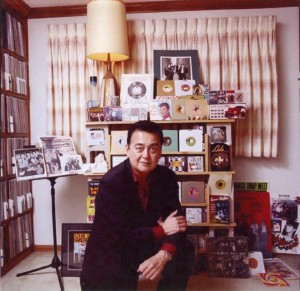 Little Julian Herrera was a very big regional star.
Little Julian Herrera was a very big regional star.
A: Little Julian Herrera was an important early influence in the East Los Angeles musical canon. In 1956, Little Julian Herrera released his first single, “Lonely, Lonely Nights” on r & b bandleader Johnny Otis’ Dig label. To bluntly state where Herrera’s timeline is situated during rock’s early days–he arrived a mere two years after Elvis Presley first unleashed rock ‘n’ roll to the world in 1954, and two years before Ritchie Valens recording debut in 1958. Herrera, the first East Los Angeles rock ‘n’ roll star (even with assumed dual-identities), was raised by a Chicano family in Boyle Heights and frequently played the legendary El Monte Legion Stadium. His sudden drop-out from sight in 1960 qualifies him as a bona fide Los Angeles mystery that has never been solved.
Q: Why did the audiences in East L.A. always have a very special and passionate link to Southland radio DJ’s like Art Laboe and Dick Hugg “Huggy Boy”? I know the same could be said about West L.A. and Hollywood and San Fernando teenagers and fans relating to the DJ’s on KFWB and KRLA throughout the sixties.
A: Seminal East Side D.J.’s Art Laboe and Huggy Boy ruled AM radio and influenced barrio listeners with their dedications and community involvement; such as broadcasting live from Scrivners (a drive-in restaurant in Hollywood) and Dolphin’s of Hollywood (a record store on E. Vernon Ave). Ironically, the two greatest messengers of Chicano music, were not even of Mexican descent. Huggy Boy looked Latino and I think people related to that as he played all the popular East L.A. hits of the day.
“Comedian Paul Rodriguez told The Los Angeles Times that ‘He (Laboe) is more Chicano than some Chicanos.’ Laboe started the popular Oldies But Goodies album series, which were categorized by a ‘Dreamy Side’ and a ‘Jump Side’, and invented the concept of “dedications” on the air. Consequently you were able to go on the radio and hear yourself, and if your boyfriend or girlfriend was listening on the other end, they also got to hear their name on the air. Before that, we never got on the radio at all, these guys were our voice. The Blendells (who hit with ‘La La La La La’) even cut a side called ‘Huggies Bunnies,’ named after Huggy Boy, so they could get airplay. Art Laboe and Huggy Boy were Chicano music ambassadors who owe their careers to the Latino community.
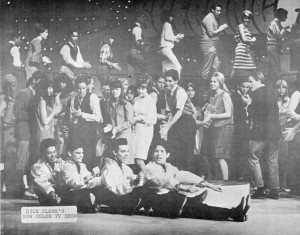 Q: I talked to you and several original East L.A. based musicians at length for my new book Turn Up The Radio! Rock, Pop and Roll in Los Angeles 1956-1972.
Q: I talked to you and several original East L.A. based musicians at length for my new book Turn Up The Radio! Rock, Pop and Roll in Los Angeles 1956-1972.
Can you discuss the still going musical legacy of Thee Midniters and other artists who still tour and make recordings? You have championed them and helped manage their work. The vision of Eddie Davis and or Billy Cardenas continue when we still hear on the radio Thee Midniters, The Blendells, the Premiers who first gave us “Farmer John,” Cannibal & the Headhunters, Mark and the Escorts, Tierra, and El Chicano.
A: Let’s explore the definite musical influence left by the East Side Sound that invaded the American pop-culture world. The 1950’s ended with Ritchie Valens tearing up the Billboard charts with his one-two, knockout punch of “Donna” (#3) and “La Bamba” (#22 ). The East L.A. music scene exploded in the 60’s with national charting hits: “Angel Baby” (#5) by Rosie and The Originals, “Farmer John” (#19) by The Premiers, “La La La La La” (#62) by The Blendells, and “Land of 1000 Dances” recorded both by Cannibal & The Headhunters (#30) and Thee Midniters (#67). This should have been enough to propel some of these artists into long-standing careers by major record labels, but it never happened. As it is, these songs are seldom played on the radio now days, let’s hope they will not be forgotten.
“Thee Midniters were ‘The Godfathers of 60’s East L.A. rock ‘n’ roll’ and still occasionally perform with their original lead singer, Little Willie G. And when that event happens, it instills a pride in the audience, a kind of romantic and heartfelt notion that their hero is still there up on the stage and still vocally delivering with the same power as he did back in the day.
“Art Laboe’s Latin Oldies Legend concerts today, with Thee Midniters as headliners, still pack them in today at Nevada’s Buffalo Bill’s Casino, Honda Center, and other top-line venues. In recent years, I have witnessed Thee Midniters at such venues as the Santa Monica Pier, House of Blues, Gibson Amphitheatre, Amoeba Records, etc. and their performance is as good as any band happening today. Even in this day and age, they don’t have to take a backseat to anyone.
Q: What drew you to these regional artists? I know you also worship the Beatles, the Beach Boys, surf and car music along with the Phil Spector-produced girl group records and 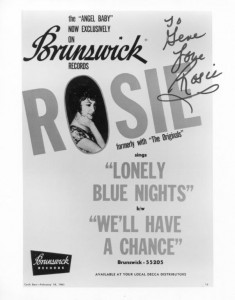 rockabilly.
rockabilly.
A: Being from Southern California, I was immediately drawn to local musical artists such as The Beach Boys and Jan & Dean. They sang of places I had heard of and seen. Although it may sound strange to some (that a kid from East L.A. could worship surf music), I was seduced by the whole scene of beach movies, surfing, bikinis, the smell of sun-tan lotion, and boogie-boards, while listening to KRLA and KHJ on my tiny transistor radio. My aunt Julie would take us to Hermosa Beach or Manhattan Beach during the innocent days of the early 1960’s. This was my exposure to this lifestyle.
“Phil Spector made a huge mark on rock ‘n’ roll, and I am sure that his Wall of Sound production (in some secret morse code) influenced East L.A. music movers & shakers like Eddie Davis and Billy Cardenas. Spector hit his apex in 1962-1966, which was basically the start of East L.A. rock ‘n’ roll.
“Sitting on our living room couch, along with the rest of the country, I saw the Beatles U.S. debut on The Ed Sullivan Show on our black & white television set. My mind was never the same. Following the Kennedy assassination, and the sugary-pop that ruled the airwaves at the time, the time was ripe for The Beatles to come and conquer America. We needed that shot in the arm. My world was turned around and I became hooked on music in a bad way.
Q: Was there some sense of identity you felt by checking out and supporting the East L.A. recording world as you lived, and still live in the world of East L.A.? Or, was it just was available to you initially?
A: Born and raised in East Los Angeles, being attracted to the East L.A. sound was a natural progression. It was the soundtrack of my youth. I remember the first time I heard the single “Whittier Blvd.” by Thee Midniters on KRLA radio in 1965. It starts off, “Let’s take a trip down Whittier Blvd…..arriba, arriba,” it was rock ‘n’ roll with a soulful Latin flavor. It was wild, it was different than anything I heard on the radio. Then, the single began to creep up the local charts competing with artists such as the Beatles, the Rolling Stones, the Four Tops, Sonny & Cher, James Brown, the Beach Boys, and the Byrds. When I found out that Thee Midniters were from East L.A., well, that just blew my mind. Here were these guys, from the same stomping grounds as me, competing with my favorite groups at the time. It made me proud that the local boys were becoming stars in the big picture. Thee Midniters had radio hits 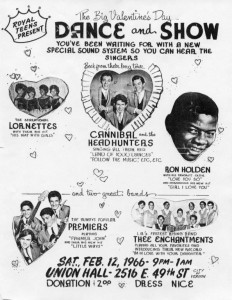 and appeared on television, ok….. Now we had hope.
and appeared on television, ok….. Now we had hope.
Q: I also think Frank Zappa was a bridge that tied in Doo-Wop and R&B and the music of East L.A. to the unique blend of rock ‘n’ roll he created from Echo Park and then Laurel Canyon. Zappa is one of your musical heroes. Why is he placed in your own pantheon of musical giants? Why did his first five albums have such an impact on you?
A: Growing up in East L.A., I was mesmerized by Frank Zappa’s first few albums. Beginning from Freak Out in 1966 (which even name checks Little Julian Herrera & The Tigers in the liners) to Just Another Band from L.A. in 1972, (which was credited to Las Mothers in resplendent cholo lettering by Limon), Zappa spoke Chicano directly to my heart. I don’t think I played another album more than We’re Only In It For the Money.
“Zappa even had Chicano bass player Roy Estrada in the band during the early years. Zappa and Ray Collins (pre-Mothers of Invention) wrote the memorable East L.A. nugget ‘Memories of El Monte’ by the Penguins on Art Laboe’s Original Sound label. Zappa said in the liner notes of his doo-wop tribute album Cruising With Ruben & The Jets (1968), ‘The present-day Pachuco refuses to die!’ Quoting ‘Dog Breath’ from the Mothers of Invention Uncle Meat LP, “Primer mi carucha (Chevy ’39), Going to El Monte Legion Stadium, Pick up on my weesa (she is so divine).’ As a kid, we used to crack up listening to the closing moments of ‘WPLJ,’ from the LP Burnt Weeny Sandwich in 1969, as Mother Roy Estrada sings in secret Pachuco calo (street slang). It’s all in there, folks.
Q: Have you been encouraged over the last few decades by the amount of CD reissues and boxed sets chronicling and re-positioning the initial sounds from East L.A. from the early sixties now reaching new ears? I know you’ve helped assemble many CD and vinyl re-releases or have been thanked in the credits for the retail world.
A: I was proud to have worked on the 4-cd box set Thee Complete Midniters (Shout! Factory) that contains rare b-sides. Other releases I assisted in were In Thee Midnite Hour!!! 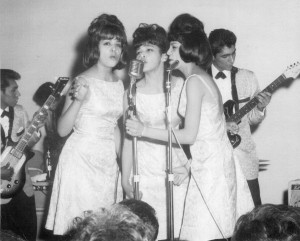 (Norton), Greatest by Thee Midniters (Thump) and Little Willie G.’s solo CD Make Up For The Lost Time (Hightone). Some interesting East L.A. reissues are: Brown Eyed Soul (Rhino), The West Coast East Side Sound and East L.A. Rockin’ The Barrio (Varese Sarabande/Rampart Records), Latin Oldies (Thump Records), the 12-cd box set East Side Story (East Side Records), The East Side Sound (Dionysus Records), and Pachuco-Soul! (Vampisoul Records).
(Norton), Greatest by Thee Midniters (Thump) and Little Willie G.’s solo CD Make Up For The Lost Time (Hightone). Some interesting East L.A. reissues are: Brown Eyed Soul (Rhino), The West Coast East Side Sound and East L.A. Rockin’ The Barrio (Varese Sarabande/Rampart Records), Latin Oldies (Thump Records), the 12-cd box set East Side Story (East Side Records), The East Side Sound (Dionysus Records), and Pachuco-Soul! (Vampisoul Records).
“What the world needs now is the definitive DVD that digs deep into the archives of television programming to unearth original performances of classic East L.A. groups. Thee Midniters, Cannibal & The Headhunters, the Premiers, El Chicano, and Tierra all appeared on such television shows as Shebang, 9th Street West, Groovy, The Lloyd Thaxton Show, and Dick Clark’s American Bandstand. These performances need to see the light of day.
Q: Can you talk a bit about your extensive personal record collection. It is a true L.A. archive.
A: I have been called obsessive about my vinyl record collection. It consists of 10,000 lp’s and 5,000 45’s and has been documented in The Los Angeles Times, Goldmine, and the L.A. Weekly. They are housed in what I call my “vault”, in neat rows of custom wood shelving in a temperature-controlled room. They are listed alphabetically, housed in plastic sleeves, and separated by plastic dividers.
“Of course, East L.A. music is my specialty, but it’s all in there, from oldies, soul, rock ‘n’ roll, R&B, country, blues, surf, jazz, pop, latin, bossa nova and Mexican. I also collect albums that feature local L.A. landmarks on the cover, such as Disneyland, The Troubadour, Knott’s Berry Farm, Dino’s, Marineland, The Cocoanut Grove, Grauman’s Chinese Theater, etc.
Q: Why vinyl? The sound? The origin? The larger liner notes?
A: I grew up playing vinyl records on my small record player. Vinyl brings warm sounds to the ears. Listening to vinyl is like listening to music in the Grand Canyon. It is large and expansive. Listening to mp3 or CD’s is like listening to music on headphones. It is small, and decompressed. It is a comfortable zen-like, near-religious experience to place the needle on the vinyl, while one studies the album cover, memorizing all the musicians that played on it, the studio it was recorded in, who produced it, and the instruments used. Obsessive vinyl-junkie behavior, you know.
Q: How did you build it and can you give some tips to the Record Collector News readers about collecting vinyl and CD’s.
A: After I bought my first record at 10 years of age, I was done…hooked for life on this passion of collecting records. I supported all the local record stores in L.A. within a 50-mile radius and scoured record bins using my evolving “want-list”. It’s an obsession, perhaps an entertaining illness. One of my favorite places to buy vinyl is the Greater Orange County Monthly Record Shows put on by Steve Brunner. There you have about 50 dealers in one room selling glorious, delicious vinyl. I enjoy reading Record Collector News because it keeps me updated on all the new record stores coming out.
Q: What are some of your impulse reason rules for grabbing a record?
A: If you see a record on your want list, buy it now because you may never see it again. Back in the day, I passed on $20 or $30 dollar albums because I could not afford them, and now they are worth $200. And support your local record stores, because vinyl is coming back in a strong way. I am not a fan of re-issued vinyl, I prefer the original pressing. It’s got to be the real thing. I tried buying albums on ebay, but my experiences have not been all that great. You have these bored housewives from the Midwest who self-proclaim themselves as professional record dealers and list their records as VG+, yet when I receive them, they are trashy, not even worthy of donating to Goodwill.
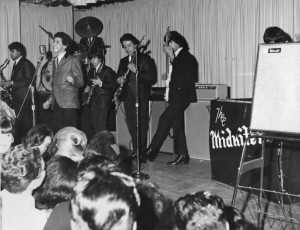 Q: Does money or purchase price play a big factor in the yes or no decision?
Q: Does money or purchase price play a big factor in the yes or no decision?
A: Harvey, I have been blessed to be at the same banking/real estate job since 1982, if you can believe that, so now I am in a better position to buy the records that I salivated on as a 10-year old kid. We used to go to downtown L.A. to shop at the Kress store on Broadway, and while the family walked around, I hung out at the record section and flipped through all the LP’s and 45’s, wishing I could buy them all. Thank God, life is a little much easier now and I can afford to buy some of those records that I used to crave.
Q: What are some of your best-ever moments finding a rare record? What are a few of your most prized items?
A: In the early days of record swap-meets, I found Los Lobos first independently released album, “Just Another Band from East L.A., (reportedly only 3,000 were pressed) at the Music Machine on Pico Blvd. in West L.A. for only $8. Today it’s probably worth $300. In Downey on Lakewood Blvd., there was a one-of-a-kind little neighborhood record store called Wenzel’s Music Town. Like walking into a time-warp, you were welcomed by owners Tom and Maxine Wenzel in their unfashionably-hip polyester outfits while the sounds of KRTH-FM played real oldies-but-goodies on warm-sounding house speakers.
“Looking through rows and rows of 45’s and LP’s in the main room, one needed permission to enter the rare record room through a little gate. There I found the mono version of Presenting the Fabulous Ronettes on Philles Records for $20 (value today $400) and Ritchie Valens His Greatest Hits on Del-Fi Records for $10–it still has the original price tag on– (value= $150). Sidebar: during the last week of Wenzel’s existence, I was fortunate enough to buy a few of the sepia-toned vintage rock ‘n’ roll posters that adorned their walls.
“I own the holy grail of East L.A. record collections, which includes the complete vinyl set of The Salesian Rock ‘N Roll Shows, volumes 1-5, that were released from 1964-1965. Value: priceless.
“The most sentimental record I own is Meet The Beatles! (high-fidelity) on Capitol Records, because it’s the first record I ever purchased and I even (unfortunately) signed my name on the back cover in blue ink.
Q: What discs and treasures are you seeking?
A: I have been looking for the vinyl record “Pachuko Hop” by Chuck Higgins on the Combo Records label. In typical 50’s cheesecake style, the original cover showed a naked woman on the cover with a scarf strategically placed over her body. This cover was eventually yanked from the shelves in 1960, as it was deemed too risqué by “the authorities.” Eventually it was re-released with crude hand-drawn graphics and a photo of Higgins.
Q: You’ve just published Mexican American Boxing in Los Angeles” What was the genesis of this book?
A: This is the first book to put together all the colorful, flamboyant and courageous Mexican American boxers from the Los Angeles area in one place. It’s been a long time coming. From the boxers’ outrageous ring war stories to their heartfelt confessions, my goal is to keep the spirit and legacy alive of Mexican American boxing for generations to come. I hark back to the days “when Los Angeles was truly a fight town,” when boxing in Los Angeles revolved around the Olympic Auditorium and the Main St. Gym. Now with these institutions gone, L.A. has lost some of its boxing allure. I want to keep the memory alive of when boxing in Los Angeles was “the talk of the town”. It was a natural for me to write Mexican American Boxing in Los Angeles because all these glorious boxing stories were stored in my head and I just had to match them with my lifelong boxing photo collection.
Q: What did you further discover or learn in the process of doing the book about the popularity of the Mexican-American boxers in L.A.?
A: That there is definitely a sociological culture around this group of Mexican American boxers in Los Angeles. The timing of the book’s release appears to be right, as the fans of the Olympic Auditorium during the Enrique Bolanos, Art Aragon, Mando Ramos, and Carlos Palomino eras are getting a little older now. In a few more years, we will have lost a lot of these senior-citizen fans, but luckily they are now getting a chance to enjoy this historic and educational book about their fistic Mexican American boxing idols. I have been promoting this book, old-school style, if you wish. I am taking this book to the streets and literally selling books out of the trunk of my car. I have been attending every local boxing function, been fortunate to speak to the people, and the reception has been enthusiastic.
Q: There has always been some sort of relationship between boxing and music in the L.A area. Rock concerts and boxing depicted in your book took place at the Los Angeles Sports Arena, Inglewood Forum, Olympic Auditorium, Santa Monica Civic Auditorium, even Dodger Stadium.
A: The venues you mention above regularly included championship boxing as well as memorable concerts throughout the years. Frank Zappa, as a solo act, played the storied Olympic Auditorium, the same place that Art Aragon, the original “Golden Boy,” fought regularly during the 50’s. Coincidentally, Aragon along with Rampart Records honcho Eddie Davis, and record producer Lou Adler all attended Roosevelt High School in Boyle Heights.
(A small portion of this article was published in the magazine Record Collector News November 2014 issue). 1
Los Angeles native and music historian Harvey Kubernik has been an active music journalist for over 40 years and is the author of 6 books, including This Is Rebel Music (2002) and Hollywood Shack Job: Rock Music in Film and on Your Screen (2004), published by the University of New Mexico Press.
In 2009 Kubernik wrote the critically acclaimed Canyon of Dreams: The Magic and the Music of Laurel Canyon, published by Sterling. In summer 2012, the title was published in a paperback edition.
He is also a writer of That Lucky Old Sun (2009), a Genesis Publications limited-edition title done in collaboration with Brian Wilson of the Beach Boys and Sir Peter Blake, designer of the Beatles’ Sgt. Pepper’s Lonely Hearts Club Band cover.
With his brother Kenneth, he co-authored the highly regarded A Perfect Haze: The Illustrated History of the Monterey International Pop Festival, published in 2011 by Santa Monica Press. They have also teamed up for a book with photographer Guy Webster for Insight Editions, Big Shots: Rock Legends & Hollywood Icons: Through the lens of Guy Webster, published on October 14, 2014. Introduction by Brian Wilson.
Otherworld Cottage Industries in February 2014 published Harvey Kubernik’s book It Was Fifty Years Ago Today: The Beatles Invade America and Hollywood.
During April 2014, Harvey Kubernik’s Turn Up the Radio! Rock, Pop, and Roll in Los Angeles 1956–1972 was published by Santa Monica Press garnering national and international acclaim.
On September 9, 2014, Palazzo Editions published Leonard Cohen: Everybody Knows, a coffee-table-size volume with narrative and oral history written by Kubernik.
This century Kubernik penned the liner notes to the CD re-releases of Carole King’s Tapestry, Allen Ginsberg’s “Kaddish,” the Elvis Presley ’68 Comeback Special and the Ramones’ End of the Century.

